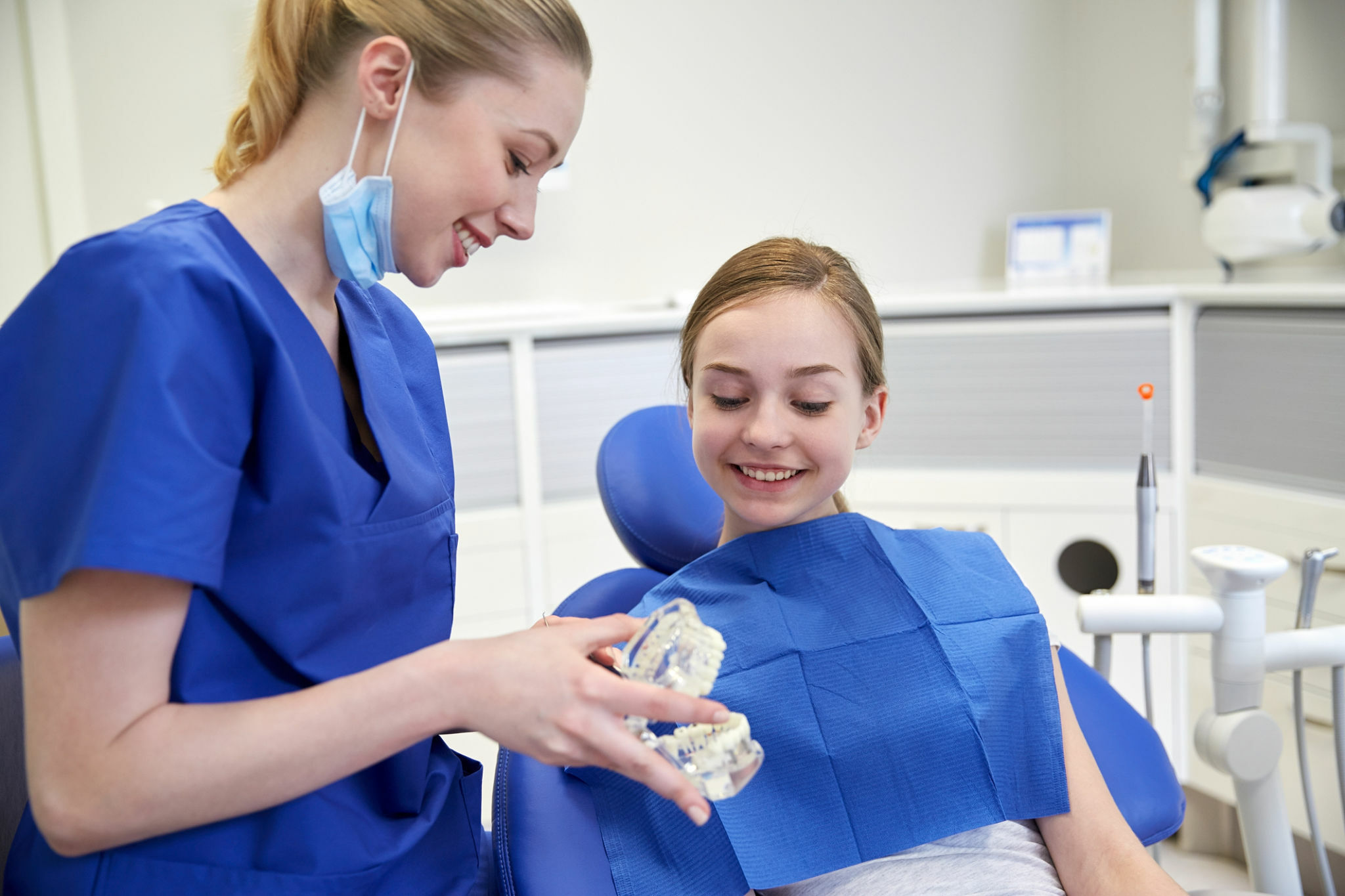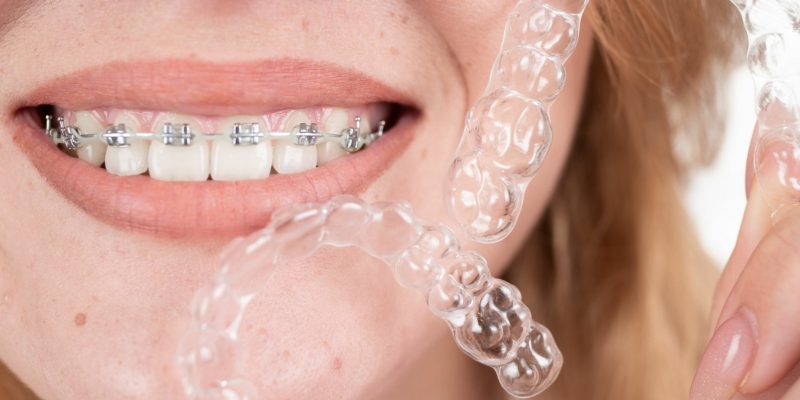Summary
The options keep expanding when it comes to effective teeth and a beautiful smile!
When researching your options, you might be confused and need clarification on Invisalign dentists and traditional orthodontists. Both treatment procedures have unique advantages, and understanding their differences can help individuals make informed decisions about their orthodontic journey.

Keeping the same in mind, this blog explores:
- Invisalign Dentists – The Pioneer of Clear Aligners
- Traditional Orthodontists – Masters of Orthodontic Care
- Traditional Orthodontist or Dentist – Who Should You See for Your Invisalign Treatment?
- Making a Choice: Invisalign or Traditional Orthodontic Measures
- Treatment Procedure: Traditional Orthodontics vs Invisalign
Continue reading as we understand more about these treatments in the following sections.
Invisalign Dentists – The Pioneer of Clear Aligners
Clear aligners are a great alternative to conventional braces. Invisalign dentists use them to provide orthodontic ailment. These translucent, removable aligners progressively reposition the teeth into the correct position and are designed specifically for each patient.
Clear braces are popular among adults and teenagers because of their discreet and pleasant nature. Visual aesthetics is one of the critical benefits of choosing a clear braces dentist. When done by Carolina Smiles Family Dentistry professionals these aligners are nearly unnoticeable, allowing people to correct their teeth without wearing metal braces.
Traditional Orthodontists – Masters of Orthodontic Care
An orthodontist is a dentist who creates and maintains ideal teeth, jawbones, and lip structures. Orthodontists fit metal or ceramic brackets to the teeth and link them together with wires that exert modest pressure to guide the teeth into normal alignment in traditional braces.

While braces are more visible than clear braces aligners, they are far more successful in resolving severe orthodontic problems. Experienced orthodontists can also treat issues like underbite and overcrowding. Therefore, if you face any orthodontic problem, you can use special braces and other devices to align your smile.
Traditional Orthodontist vs Invisalign Dentist – When Do You Need One?
A traditional orthodontist usually focuses on diagnosing, preventing, and correcting misaligned teeth and jaws using oral appliances.
On the other hand, you need to visit a clear braces dentist when you are considering treatment using braces for invisible teeth. Clear braces are a popular alternative to traditional braces for straightening teeth.
Traditional Orthodontist or Dentist – Who Should You See for Your Invisalign Treatment?
Ideally, you can go to your dentist for Invisalign treatment or a specialized orthodontist qualified to provide orthodontics invisalign. But there is a thin line between these two dental professions.
Role of Dentists & Orthodontists
Dentists are general practitioners who have completed their degree in dental school and are licensed to provide a wide range of dental services, including orthodontics.
Orthodontists, on the other hand, are specialists who have completed additional training in orthodontics and primarily focus on diagnosing, preventing, and treating malocclusions.
A dentist can provide an initial consultation and evaluation for clear braces. An orthodontist has experience treating more complex cases with various orthodontic devices and has additional training in straightening teeth.
If you are seeking general treatment for improving the appearance of your smile, you can see general dentists. For complex dental problems, visiting a traditional orthodontist is your best choice.
Treatment Procedure: Traditional Orthodontics vs Invisalign
The treatment procedure is different for both of them. Let’s discuss this in detail!
Insight Into Traditional Orthodontics Treatment
The procedure is generally carried out in several stages, and here is an overview of the orthodontic process:
Step 1: Consultation and Examination
The first step involves consultation with your traditional orthodontist, who will examine your patient’s teeth, jaw, and facial structure. X-rays, photographs, and teeth impressions will help the orthodontist assess the extent of the dental issues.
Step 2: Treatment Planning
Based on the examination and diagnostic records, your orthodontist will develop a personalized treatment plan outlining your specific orthodontic issues, the recommended course of action, and the estimated duration.
Step 3: Placement of Braces
After finishing planning, the orthodontist will attach the braces to your teeth in the next phase. The braces include brackets, wires, and bands. The orthodontist will bond the brackets to each tooth, thread a wire through the attached brackets, and place bands around the back of the molars for additional support.
Step 4: Adjustments
After the orthodontist attaches the braces, you must visit your dentist at regular intervals (every 4-6 weeks), as they will make periodic adjustments to move the teeth to the desired positions gradually. During each visit, the orthodontist will adjust the bands and may change the wires.
Step 5: Monitoring the progress
Throughout the treatment, the tooth movement is closely monitored during regular checkups. Besides, the braces are removed once the teeth have reached their desired position. Following the removal of aligners, a retainer is often provided to help maintain the corrected tooth positions.
Insight Into Invisalign Treatment
The treatment procedure for Invisalign tooth involves multiple steps as well:
Step 1: Initial Consultation
On your first visit to your orthodontist or dentist, he will examine your teeth, take X-rays, and discuss your treatment goals.
Step 2: Treatment Plan
If Invisalign suits your case, the dentist will create a personalized treatment plan. 3D imaging technology may be used to create a digital representation of your teeth and plan the step-by-step movement.
Step 3: Custom Aligners
Based on the treatment plan, we create a series of custom-made aligners for you. Professionals design each set of Invisalign ortho to move your teeth into the desired position gradually.

Step 4: Wearing the Aligners
Depending on your dentist’s recommendation, you will have to wear each set of custom-made aligners for about 1-2 weeks. You need to wear them 20-22 hours daily, removing them only for eating, brushing, and flossing.
Step 5: Progress Checkups
Regular checkup appointments with your dentist and orthodontist are scheduled to monitor your progress. You will receive a new set of aligners during every visit to advance the treatment.
Sometimes, small tooth-colored attachments may be placed on specific teeth to help with certain movements, and refinements may be necessary to get your desired results.
Once the Invisalign braces treatment is complete and the desired results are achieved, your dentist might recommend you use retainers to maintain the shape.
Making a Choice: Invisalign or Traditional Orthodontic Measures
The decision to use an Invisalign or a traditional aligner depends on various factors, including orthodontic needs, lifestyle, and personal preferences. One of the determining factors is ailment complexity.
Invisalign braces are suitable for treating mild to moderate orthodontic issues. For complex cases, a traditional aligner is the best option. In some cases, traditional braces may achieve results more quickly than clear aligners. The fixed nature of braces allows for continuous pressure on the teeth.
Takeaway
- Invisalign dentistry is a great way to address teeth alignment discreetly. In contrast, traditional aligners are a more renowned approach to teeth alignment.
- The choice between clear and traditional braces depends on individual preferences, lifestyle, and the complexity of the orthodontic case.
- The cost of treatment can vary, and it’s essential to consider your budget and whether your dental insurance covers the orthodontic process.
- Don’t confuse yourself between the options! Visit our Carolina Smiles Family Dentistry professionals to learn more from our experts.

